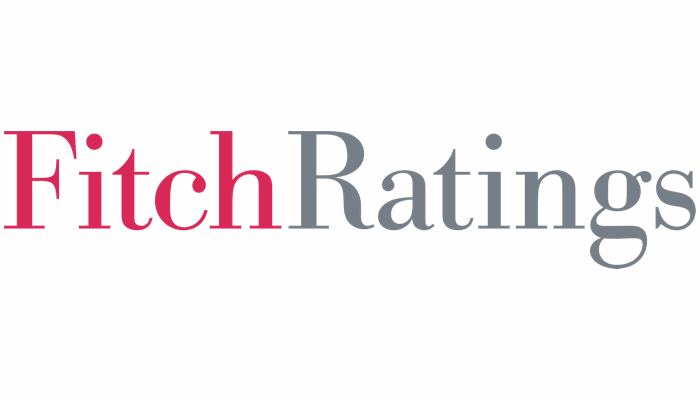AI in Insurance

How Underwriting and Claims Are Reshaped by AI in Insurance — and How They Stay the Same
The use of artificial intelligence in insurance continues to grow. Here’s how the industry is using AI to optimize and augment its processes while keeping people at the center of the equation.
AI is a powerful tool with the potential to streamline and speed up many functions, but it can also misinterpret information or mislead users if left unchecked. Today, AI is reshaping the way insurers do business –mostly for the better – but it comes with its own set of risks that the industry is carefully considering as it adopts and implements new tools.
Insurers handle massive amounts of data. AI has had the biggest impact as a tool to facilitate gathering, analyzing and summarizing that data to expedite both claims and underwriting processes.
“Carriers are using AI for intelligent document processing, which is rapidly replacing old ‘scan and index’ systems, with LLMs now handling OCR, indexing, entity extraction, and document summarization for both claims and underwriting,” said John Kain, head of worldwide financial services market development at Amazon Web Services.
“These LLMs capture documents and understand what’s in them – whether for claims processing or underwriting decisions. Today, multiple carriers use IDP for attending physician statements and claims document ingestion, which is cutting manual processing times from days to minutes and delivering massive ROI efficiency gains.”
Ray Ash, executive vice president and head of financial lines with Westfield Specialty, described underwriters spending hours poring over boxes of submission documents in order to assess a new risk. Today, that process can be cut down from hours to minutes with the help of data scraping tools. Ash also described the potential for AI to help capture data from face-to-face roundtable conversations about risk.
“We would like for AI to help accelerate our process by summarizing our conversations about risks, using language recognition software to capture the salient points. But it may capture factually incorrect statements within those conversations, so there are limitations on the technology,” he said.

Investing in AI-Native Insurers: Capturing the Future of Insurance
AI is transforming insurance, with the AI insurance market projected to grow from $19.6B in 2025 to $88.07B by 2030 at 35.06% CAGR.
- AI-native insurers using automation and generative models achieve 6.1x higher shareholder returns than peers, with 70% faster claims processing and 54% improved risk assessment accuracy.
- Leaders like Chubb (58% 3-year underwriting growth) and Lemonade ($1B in-force premiums) demonstrate AI-driven efficiency gains and market recovery.
- Challenges include regulatory complexity and data governance risks, but AI could unlock $1.1T in industry value by 2030 for agile adopters.
According to a report by Mordor Intelligence, the global AI in insurance market is projected to expand from $19.6 billion in 2025 to $88.07 billion by 2030, growing at a compound annual growth rate (CAGR) of 35.06%. This surge is fueled by AI’s ability to automate claims processing, enhance fraud detection, and deliver hyper-personalized underwriting models, creating a competitive edge for early adopters.
AI-native insurers are not merely adopting technology—they are reengineering their business models around it. McKinsey’s research underscores that companies fully integrating AI into core operations have generated 6.1 times the total shareholder return (TSR) of their peers over the past five years.

AI is having tangible outcomes across the insurance value chain
According to a poll conducted by GlobalData in Q3 2025, 45.8% of respondents believe underwriting and risk profiling is the area of the insurance value chain that will be most positively impacted by AI.
AI will boost efficiency in the insurance industry, with underwriting and risk profiling seen as the area of the value chain most ripe for AI disruption, according to GlobalData surveying. Meanwhile, data from Lloyd’s finds financial services providers are already enjoying improved productivity and enhanced customer experiences thanks to the implementation of AI.
According to a poll conducted by GlobalData on Verdict Media sites in Q3 2025, which garnered over 150 responses from industry insiders, 45.8% of respondents believe underwriting and risk profiling is the area of the insurance value chain that will be most positively impacted by AI. Claims management and customer services will be the next areas, attaining 20.3% and 17.6% of responses, respectively.
Which area of the insurance value chain will be most positively impacted by AI? Q3 2025
The incorporation of AI along the various areas of the insurance value chain is already having tangible outcomes; driven by an increase in adoption rates, while the technology has continued to evolve quickly. According to the latest Lloyds’ Financial Institutions Sentiment Survey (FISS), which surveys over 100 leaders across the UK’s largest banks, asset and wealth managers, insurers, and financial sponsors, 59% of financial institutions have improved their productivity from AI—up from 32% in 2024. In addition, 33% of financial institutions report seeing an enhancement in their client experience, compared to 14% a year prior.
Next-Gen Insurance: Powered by AI
Welcome to the next generation of insurance. Our industry stands on the cusp of an exhilarating technological revolution, primarily driven by artificial intelligence. Embracing next-generation technology is no longer a choice but a necessity for success.
Insurance-specific AI is the key to unlocking new possibilities, driving innovation, and creating lasting value for agencies and their clients. It is ushering in a new era that promises a more efficient, responsive, and customer-centric insurance ecosystem, perfectly attuned to the needs of today’s digital-savvy consumers and insurance professionals. Three pivotal factors will enable agencies to succeed in this next generation of insurance: data, the insurance industry talent gap, and real-time connectivity to create seamless experiences.
Anupam Gupta is chief product officer at Applied Systems Inc
News

Fitch sees continued profitability for US P&C insurers in 2025 - Reinsurance News
Fitch Ratings, a provider of credit ratings, commentary, and research, reported that the US property and casualty (P&C) insurance sector delivered notably strong underwriting results in the first half of 2025 and is expected to remain profitable through the remainder of the year.
According to Fitch, the industry posted a statutory combined ratio of 96.4% for the first six months, a 1.2-point improvement from the same period in 2024.
The firm noted that while overall pricing momentum is positive, it continues to moderate, with competitive pressures in the auto segment and the potential impact of tariffs representing risks to sustained improvement.
Fitch anticipates the industry’s combined ratio for the full year will rise slightly compared with 2024’s 97% but remain under 100%, maintaining profitability despite potential headwinds from hurricane activity, wildfires, and inflationary effects tied to trade measures.
Fitch highlighted that catastrophe losses reached between $75 billion and $92 billion in the first half of the year, driven primarily by January’s Palisades and Eaton fires and a series of severe storms.
However, the second quarter saw relatively muted catastrophe events, while favourable prior-period reserve development equivalent to 2.8% of earned premiums, compared with 1.8% last year, helped offset earlier losses.
In terms of line-specific performance, Fitch reported that the overall direct loss ratio was largely stable, with personal lines improving slightly and commercial lines showing modest deterioration.

U.S. commercial insurance rates ease to 3.8% increase - WTW
U.S. commercial insurance rates increased 3.8% in the second quarter of 2025, according to WTW.
U.S. commercial insurance rates increased 3.8% in the second quarter of 2025, continuing the downward trajectory from the prior two quarters (5.3% in Q1 2025 and 5.6% in Q4 2024), according to the latest findings from WTW's Commercial Lines Insurance Pricing Survey (CLIPS). The survey compares premiums for policies underwritten during the second quarter of 2025 to those for the same coverage lines in the respective quarter of 2024, providing a year-over-year comparison. Carriers reported an aggregate price increase of 3.8% in Q2 2025, down from 5.9% in Q2 2024.
Price growth moderated across most lines, with workers compensation, directors’ and officers’ liability, and cyber continuing to have price decreases, and commercial property recording its first price decrease after several quarters of slowing price growth. Excess/umbrella liability saw the largest increases, while commercial auto maintained double-digit growth. Small and mid-market accounts saw slightly lower increases, while large accounts continued to rise, but at a more pronounced slowdown.
"Amidst the ongoing general upward trend, our latest data from the second quarter of 2025 shows a moderation in commercial insurance pricing," said Yi Jing, Senior Director, Insurance Consulting and Technology (ICT), WTW. "While some lines continued to see increases, others remained stable or slightly declined, reflecting a period of more measured rate growth across the market."

Farmers Group to cut jobs in California amid wider industry employment decline
Farmers Group plans to permanently lay off 63 employees in California later this year, according to filings under the state's Worker Adjustment and Retraining Notification Act.
The cuts, which will affect finance and insurance roles, are scheduled to take place in late October.
At the same time, Farmers is seeking to add staff in other parts of the business. The insurer is recruiting more than 100 employees for hybrid direct sales positions across four cities, according to BestWire.
On Sept. 9, the company listed 89 corporate job openings on its website, including roles such as a field property claims adjuster in Oklahoma, a head HR business partner in Woodland Hills, and an inbound sales consultant in Kansas City, Kansas, offering a $5,000 bonus for licensed representatives.
A number of open positions are concentrated in technology, predictive analytics, sales and distribution, and product management. The hiring push underscores an industry-wide shift toward customer-facing sales and data-driven roles, even as back-office positions come under pressure.
The news comes against the backdrop of a broader decline in US insurance employment. Preliminary data from the Bureau of Labor Statistics showed the industry shed 5,500 jobs in August, reversing gains made in July when 7,500 positions were added. Analysts said the sector continues to adjust to higher operating costs, evolving customer expectations, and the impact of automation in claims and underwriting.
Research
US Property Insurance Costs Hit New High as Disasters Worsen
The cost of property insurance in the US rose to an all time-high in the first half of the year, as homeowners faced sharp price increases in states recently affected by climate-related disasters, such as California.
The average insurance payment for a mortgaged single-family home in the US rose 4.9% in the first half of 2025 — resulting in an average annual payment of almost $2,370, according to Intercontinental Exchange Inc.’s Mortgage Monitor report released Monday.
Announcements
VINspectorAI Launches AI-Powered Vehicle History Verification Platform for Safer Used Car Purchases in the U.S.
VINspectorAI.com, the revolutionary AI-powered vehicle history verification platform, officially launches in the United States, offering car buyers an unprecedented level of confidence and safety when purchasing used vehicles. Combining comprehensive VIN databases with cutting-edge artificial intelligence, the platform turns complex vehicle records into clear, actionable insights that anyone can understand.
"Our mission is to combine technology with trust. The AI integrated into the platform not only collects information but analyzes and explains it clearly. This way, every buyer has a 'digital assistant' protecting their investment and ensuring they don't miss important details," added the VINspectorAI team.
Why VINspectorAI stands out:
- AI-Powered Analysis: Transforms complex VIN and service data into digestible, clear reports.
- Risk Scores and Interactive Dashboards: Quickly assess vehicle safety, reliability, and potential resale value.
- Hidden Accident Detection: Identifies signs of previous major accidents and inconsistencies often missed by standard reports.
- Transparency and Trust: Ensures secure, worry-free transactions for both buyers and dealers.
A recent example demonstrates the platform's real-world impact: a buyer searching for a used SUV entered the vehicle's VIN on VINspectorAI. While conventional reports indicated no issues, the AI detected inconsistencies in service records, insurance claims, and replacement parts history, uncovering a previous major accident. The buyer avoided a potentially unsafe purchase, saving thousands of dollars.
Today

24th Anniversary Commemoration | National September 11 Memorial & Museum
At the center of the mission of the 9/11 Memorial & Museum is the annual commemoration ceremony. Family members of the victims will gather on the Memorial plaza to read aloud the names of those killed in the 9/11 attacks and in the 1993 World Trade Center bombing.
The National September 11 Memorial & Museum leads the nation, and the world, in marking the anniversary of the day that changed our lives forever.
The 24th anniversary commemoration ceremony will take place on the Memorial plaza and focus on an in-person reading of the names by family members. Throughout the ceremony, we will observe six moments of silence, acknowledging when each of the World Trade Center towers was struck and fell, and the times of the attack on the Pentagon and the crash of Flight 93.
Cyber Risk

Large loss claims account for 88% of all its global cyber losses, says AXA XL study, revealing key trends and insights
According to an AXA XL claims analysis, 88% of all incurred losses from its cyber claims over the last decade arise from claims that surpass $1 million, suggesting that a relatively small number of large claims are responsible for the majority of cyber losses.
The report -- Cyber Claims Unveiled: A Focused Study on Trends, Threats, and Tailored Solutions -- provides an in-depth analysis of 300+ cyber claims, revealing trends in incident types, severity, causes of loss, triggered insurance agreements, industry-specific risks, and insights into risk management practices.
According to Fran Gari, Head of Pricing, Global Cyber and the lead author of the report, "This report highlights a vital truth in the cyber risk landscape: a limited number of high-value claims account for the bulk of total losses, emphasizing the value for businesses in effective cybersecurity measures and proactive risk management strategies to provide effective protection and limit potential disruption in today's digital environment. Conducting a thorough examination of claims over an extended period is essential for uncovering evolving trends and patterns in cyber incidents."

Selective and devastating
The first half of 2025 brought a paradox to the cyber insurance world: fewer overall claims, but far more punishing losses when attacks succeeded.
A new Midyear Cyber Risk Report from Resilience shows that cyber insurance claim notifications fell 53 percent compared with the same period last year, suggesting what the firm calls “a return to operational equilibrium.” But ransomware attacks – and especially those tied to third-party vendors – grew sharper, more targeted, and costlier, leaving insurers and policyholders with little room for complacency
“The 53% drop in claims doesn’t tell the whole story,” said Jeremy Gittler, Resilience’s global head of claims. “Yes, we’re seeing fewer incidents escalate to incurred losses, but when they do hit, they’re hitting harder. The 17% increase in ransomware claims losses shows that cybercriminals are becoming more selective and more devastating in their approach.”
Ransomware remains the most damaging form of cyberattack, accounting for 76 percent of incurred losses in the first half of 2025. When vendor systems are targeted with ransomware, that figure jumps to 91 percent of overall losses
The average ransomware claim this year has topped $1.18 million, up from $705,000 in 2024. In one of the more alarming developments, Resilience observed attackers hunting down copies of cyber insurance policies and using those limits to calibrate ransom demands
